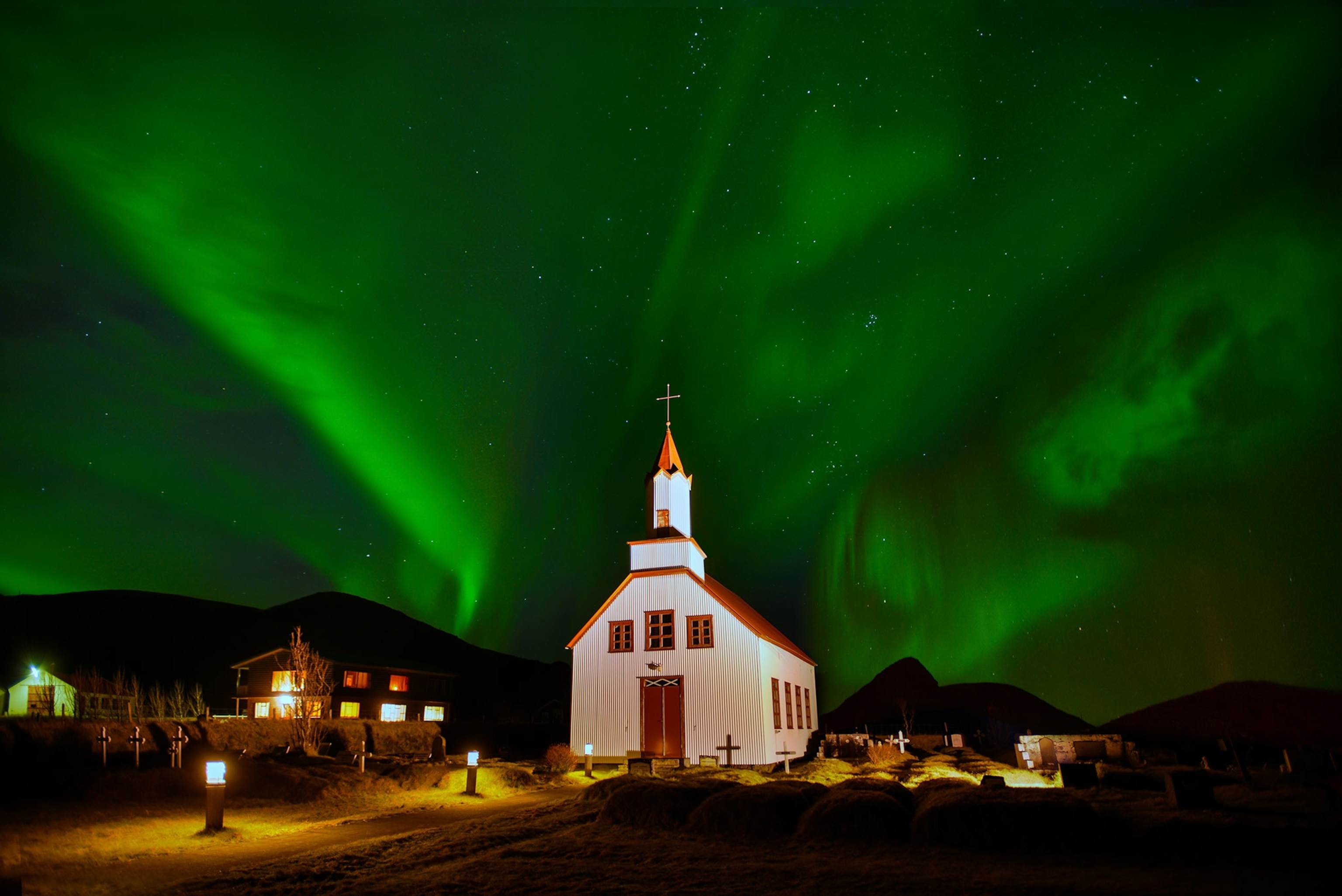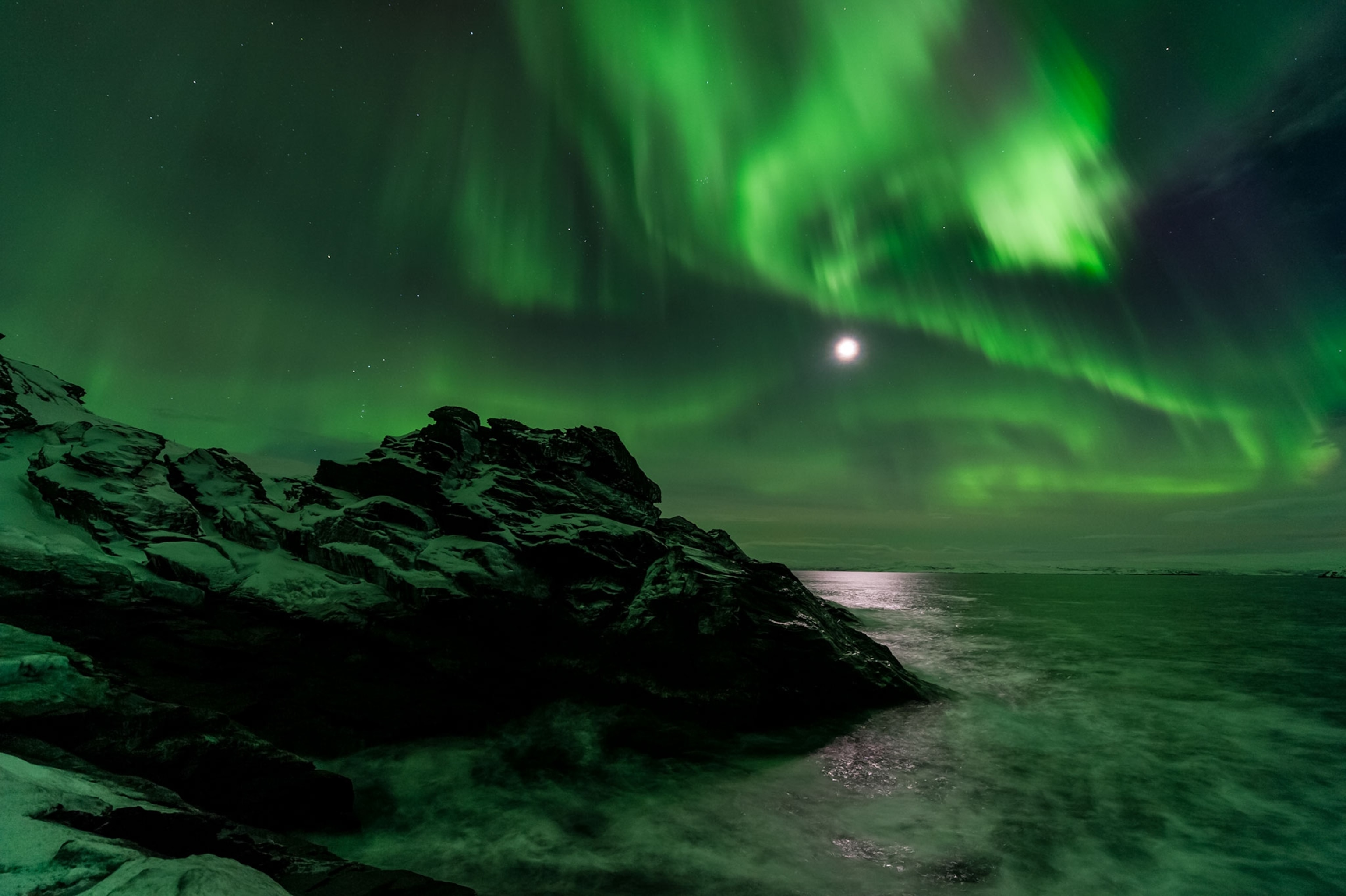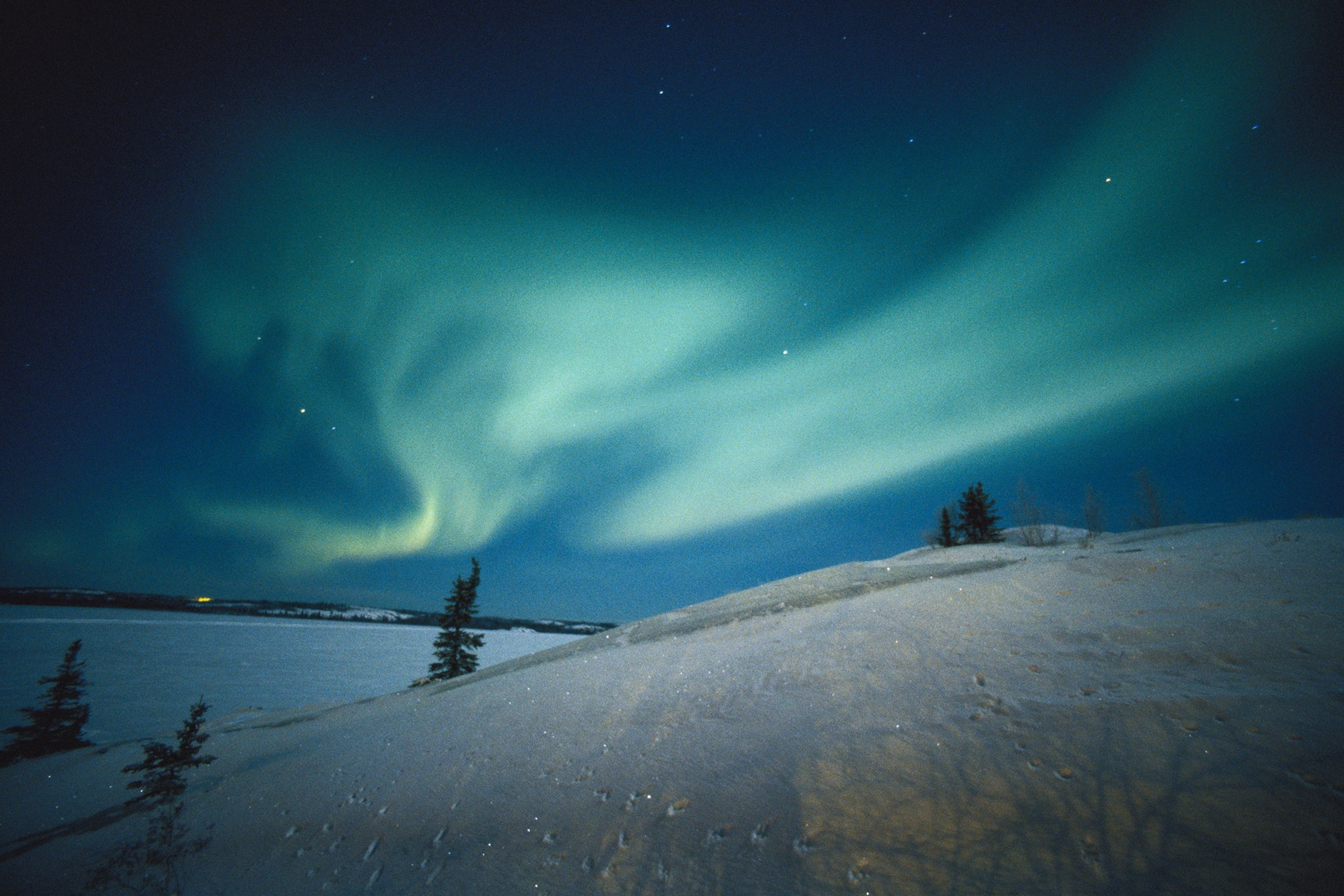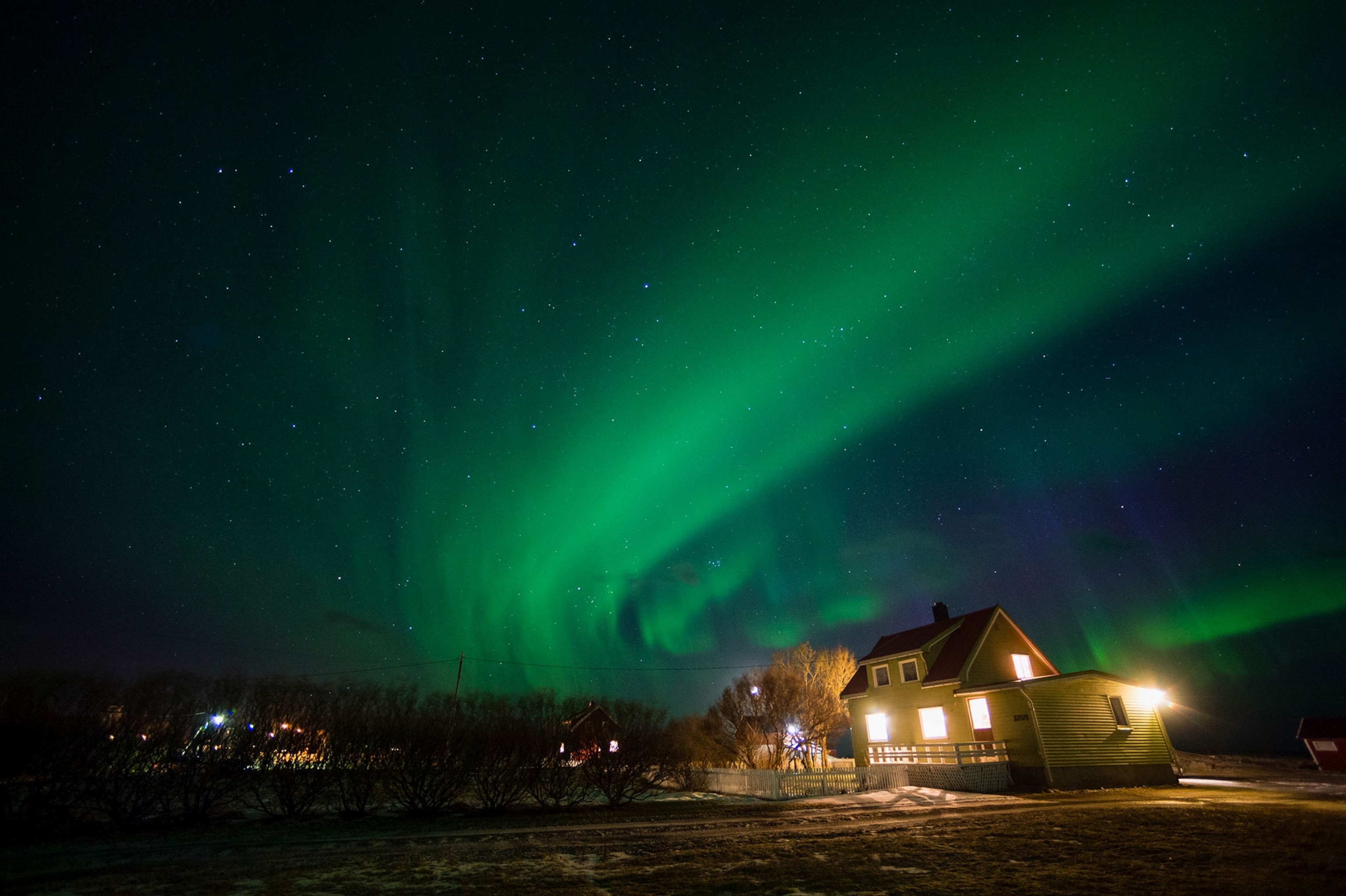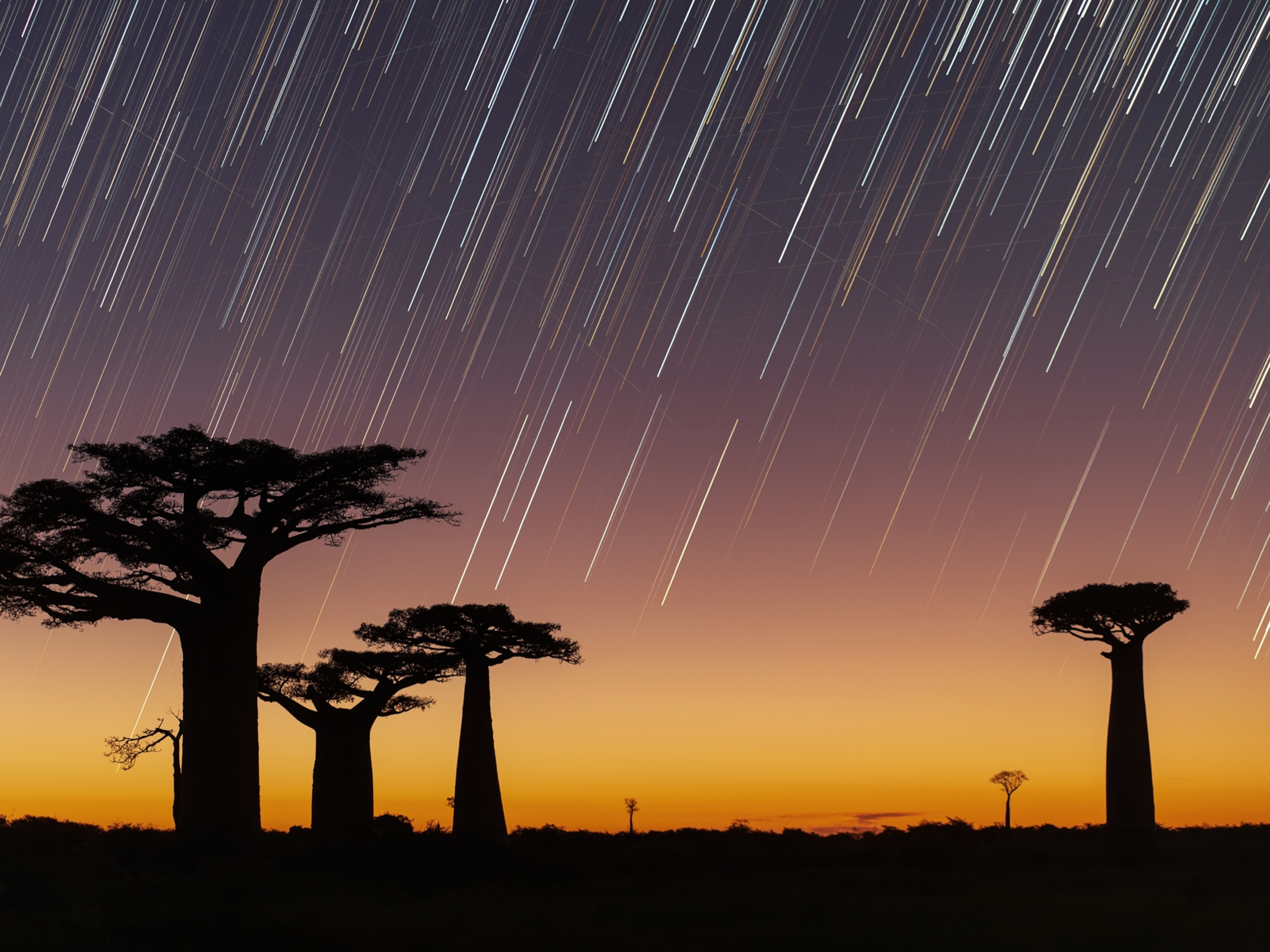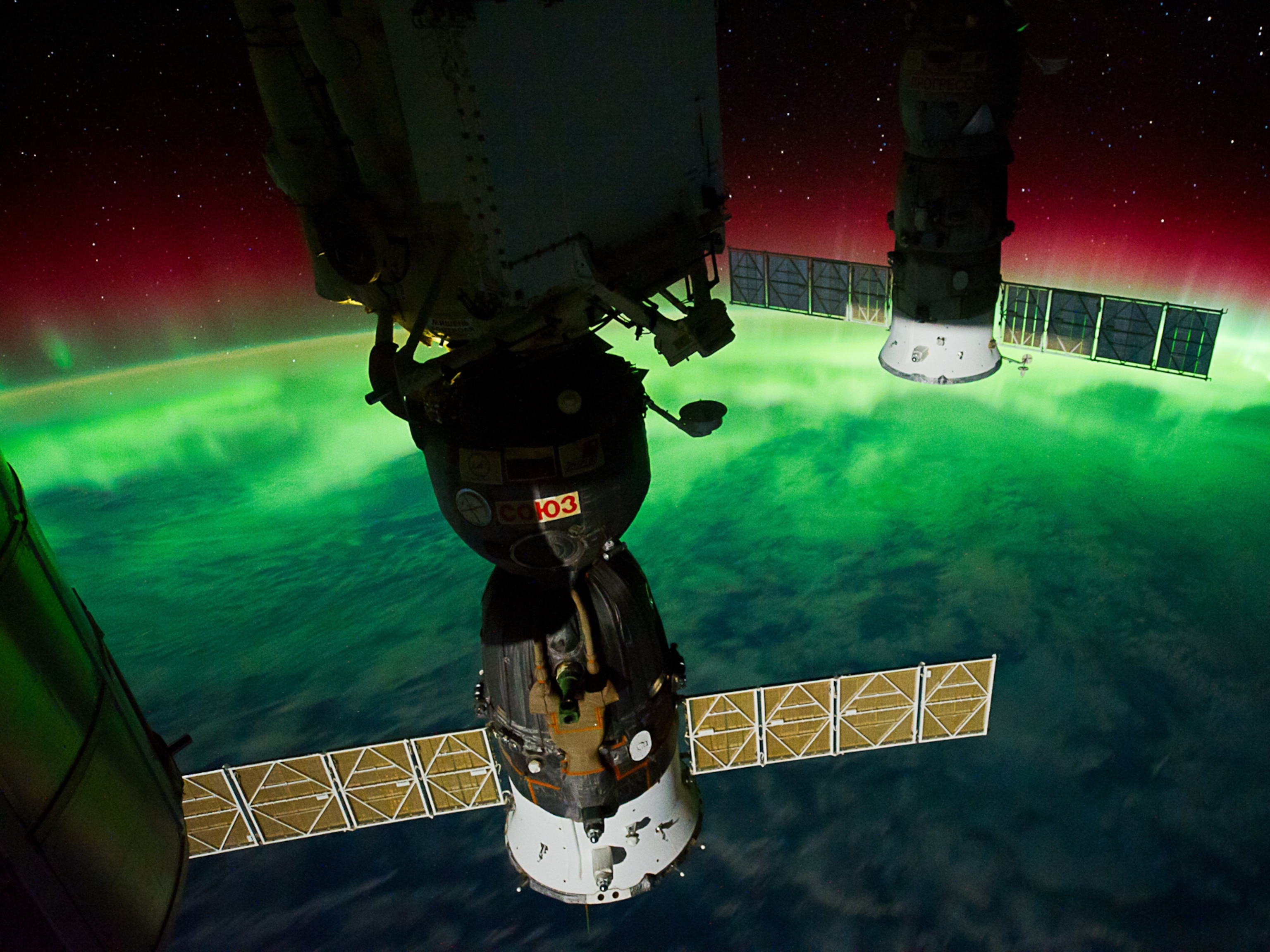How to See These Unusually Intense Auroras Before They're Gone
Earth is barreling through a pulse of charged particles from the sun, which means the celestial light show should be at its best this week.
A rip in the sun’s atmosphere sent out a strong gust of solar wind over the weekend that has now slammed into Earth. As our planet plows through this cosmic cloud, an influx of charged particles is buffeting its magnetic field and igniting what’s known as a geomagnetic storm.
As a result, high and mid-latitude sky-watchers across both hemispheres should be on the lookout the next few nights for possible pulses of brilliant auroras.
The eye-catching lights have already put on great shows the past two nights for folks in New Zealand, parts of Europe, and North America. According to forecasts from NOAA's Space Weather Prediction Center, a fairly intense geomagnetic storm should continue tonight through Thursday, as Earth’s bubble-like magnetic field faces continued bombardment.
This ongoing burst may even trigger bouts of auroras in more southern latitudes, including southern Canada and some northern U.S. states. As of Monday night, auroras had been sighted as far south as Wyoming and Minnesota.
The influx of solar particles is coming from a gap in the sun’s magnetic field called a coronal hole, which NASA spotted on the side of the sun facing Earth on March 27. This gap allows the sun to release clouds of charged particles many times larger than our planet. The solar streams travel at immense speeds and can sweep past Earth’s orbit in a matter of days.
When the bursts of particles hit Earth's magnetic field, they create geomagnetic storms. On rare occasions, such storms can damage electrical grids and temporarily knock out radio and satellite telecommunications. Any communications loss could cause air traffic controllers to reroute long-duration plane flights over the Arctic.
Geomagnetic storms also naturally funnel solar particles down into our atmosphere toward the Poles. The particles then smash into oxygen and nitrogen molecules, infusing them with energy and causing them to glow, creating colorful auroras.
Where is the best place to catch the sky show?
The best places to witness auroras are dark locations away from city lights. But intense displays can, on rare occasions, become bright enough to be easily visible from suburban backyards or even from the window of a darkened bedroom. Just remember, as with any stargazing, to turn off all your lights and give your eyes at least 20 minutes to adapt to the darkness.
When is the best time to look up?
Aurora hunters should get the best views starting around mid-evening and continuing late into the night. Generally, auroras really kick in around local midnight, but since this is an intense event, the first hints of auroras may begin soon after local nightfall.
Watch for a greenish glow to creep up the sky from the horizon—that's how many aurora events begin. If it ends up being an intense display, then a larger portion of the sky may become filled with orange, pink, and purple curtains waving overhead.
How do I take a photo of the auroras?
You may want to try your hand at capturing a souvenir of these ghostly glows. It's not hard, but you have to have the right kind of equipment, an eye for framing your shots, and some patience.
Ideally, you should have a digital SLR camera with a wide-angle lens (55 millimeters or less) to capture as much of the sky and landscape as possible. Mounting your camera on a sturdy tripod is a must, as you’ll need a stable platform to take long-exposure photos.
Your camera should have a manual setting so you can set the exposure rates at 20 to 30 seconds. Boost the sensitivity of your camera sensor to 400 ISO or higher. Both long exposures and higher ISOs will allow you to pick up hidden details and even colors that you can't see with the naked eye. A self-timer release is indispensable as well, as it will allow you to remotely trigger shots without shaking the camera.
Remember to be patient, because auroras can take anywhere from minutes to hours to unfold—and you never know when that colorful curtain of light may appear. Finally, don't be afraid to experiment with camera settings—and expect to take scores of images before you catch any keepers. Note, too, that some of the most beautiful photos of auroras include foreground objects such as houses, trees, and mountains.
While there are no guarantees that there will be more auroras this week, the only way to know for sure is to go outside and look for yourself.
Clear skies!
Andrew Fazekas, the Night Sky Guy, is the author of Star Trek: The Official Guide to Our Universe and host of NG Live! Mankind to Mars presentations. Follow him on Twitter, Facebook, and his website.


